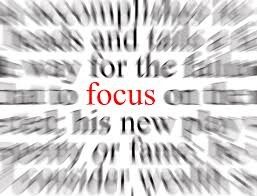There’s an old saying about strategy….”Good strategy is doing less better, bad strategy is trying to fix 100 things at once.”
There are so many fruits to getting this right. First and foremost it’s more energising being focused on fewer things because its feels more do-able. I read somewhere that worry comes from trying to control the uncontrollable and that’s what bad strategy lends itself to. You’re so stretched and scattered that worry becomes the predominant feeling.
The other fruit of getting focused is the probability of success. If you can:
1. defeat the impulsive demon that keeps telling you to change the strategy for a quicker win;
2. block out the ‘noise’ of issues trying to sound more important than they really are; and
3. create laser-like focus on fewer areas that have bigger impacts with less effort…
…you will be more likely to succeed.
This ‘theory’ has been proven time and time again over the years. A well-known case study was Apple – when the late Steve Jobs became CEO of Apple for the second time in 1997 he killed the vast majority of the projects and got the Apple business focused on a few select areas which sowed the seeds of their market leadership in the music download category (Ipod/Itunes) which then spawned the iPhone and then iPad. It’s easy to forget the Apple reinvention started with music, and music only.
A sporting example is the Oakland Athletics baseball team, their success was made famous in the movie titled ‘Moneyball’. Oakland were a club that were not blessed with huge financial resources and needed to find a cost effective way to compete. Through the use of data they were able to hone in on a couple of key statistics which proved to be much more important to success than any club had realised. At the time, the conventional wisdom within baseball clubs was to recruit players with high batting averages. Oakland’s analysis however showed that teams with strong ‘base hit’ statistics (a base hit is where a batter is able to hit the ball and reach first base) was a far stronger indicator of success then having a few superstars that could hit home runs. The cherry on top was these players were far cheaper to buy than the homerun-hitting superstars.
This analysis enabled Oakland to field a team that could outsmart and better compete against richer competitors by focusing their entire strategy (from player recruitment to team training) on improving base hits themselves and defending base hits against their competitors.
The power of focusing on a few things that have more impact for less effort/cost is the art of good strategy.


